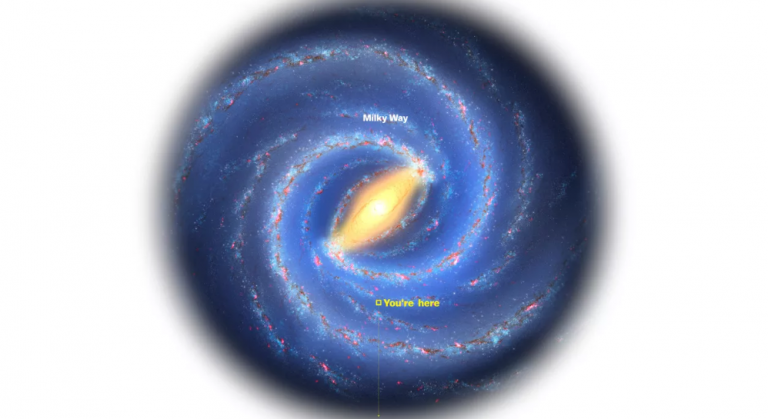Something weird is happening in our galaxy: It’s spinning fast enough that stars ought to be flying off, but there’s something holding them together.
The substance that acts as a gravitational glue is dark matter. Yet it’s incredibly mysterious: Because it doesn’t emit light, no one has ever directly seen it. And no one knows what it’s made of, though there are plenty of wild hypotheses.
For our galaxy — and most others — to remain stable, physicists believe there’s much, much more dark matter in the universe than regular matter. But how much?
Recently astronomers using the Hubble Space Telescope and the European Space Agency’s Gaia star map attempted to calculate the mass of the entire Milky Way galaxy.
It’s not an easy thing to do. For one, it’s difficult to measure the mass of something we’re inside of. The Milky Way galaxy measures some 258,000 light-years across. (Recall that one light-year equals 5.88 trillion miles. Yes, the galaxy is enormous.) And an abundance of stars and gas obscures our view of the galactic center. The team of astronomers essentially measured the speed of some objects moving in our galaxy and deduced the mass from there (the more massive the galaxy, the faster the objects should move.)
Read more HERE
Ask me anything
Explore related questions





